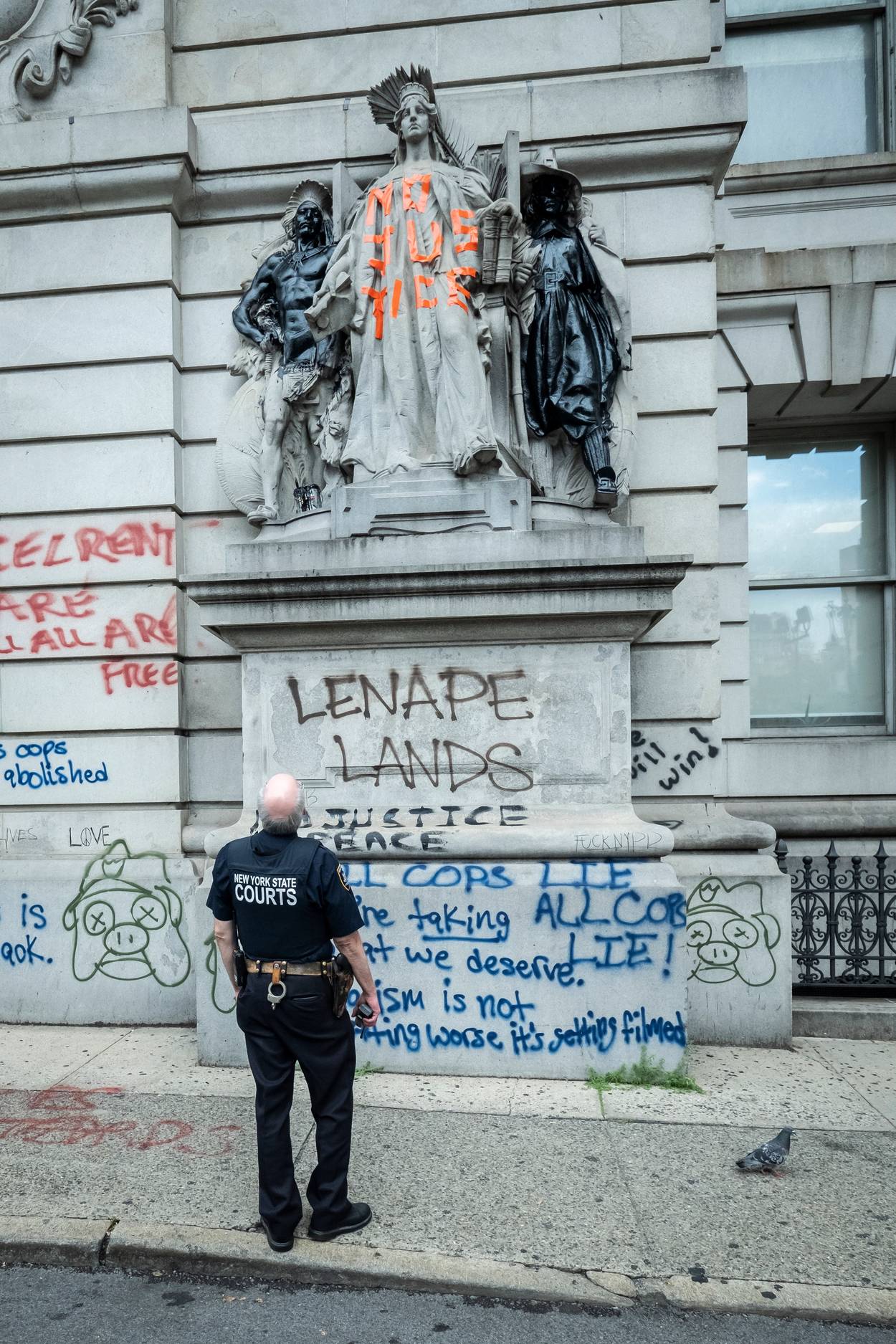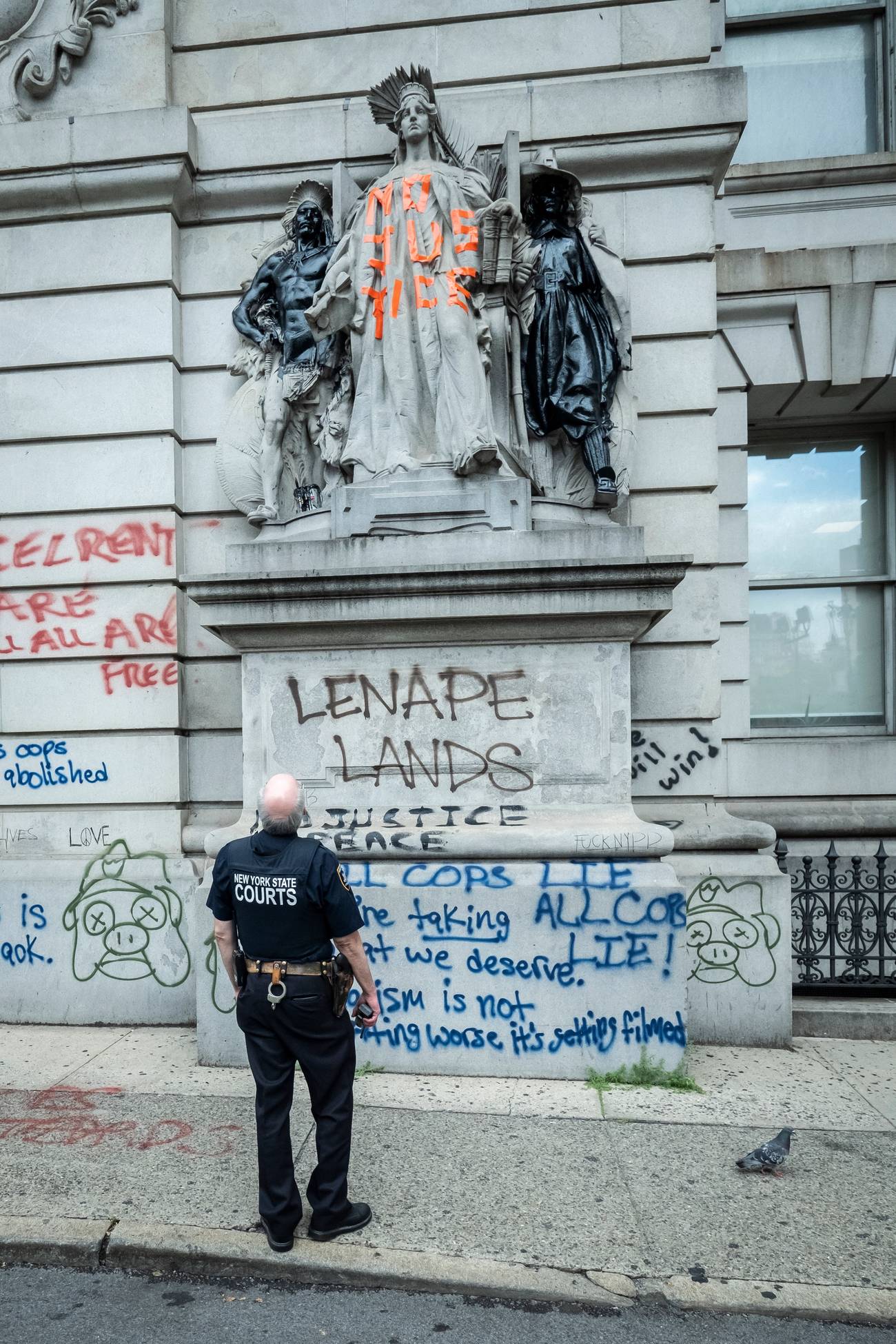The Law and Order Election
Early exit polls indicate that Democratic attitudes toward this summer’s civil unrest may have been costly




Instead of a blue wave for the Democrats, there was a red Republican wave in the 2020 elections. Many analysts are explaining this unexpected outcome in ways that confirm their prior assumptions. Anti-woke centrist liberals: The Democratic Party was too woke. Bernie Sanders-type social democrats: The Democrats blew it by not running on Medicare for All. Professional conservative pundits: Trump and Trumpism are more popular with Americans than we thought.
I beg to differ. I think this was a law and order election.
According to early exit polls, here were the reasons that voters voted for Trump and presumably other Republicans: The economy (82%), crime and safety (71%), health care policy (36%), the coronavirus pandemic (14%) and racial inequality (8%).
Crime and safety? Crime in general is at a historic low in the United States compared to the late 20th century. What on earth could these voters possibly be thinking about?
Oh. Right.
George Floyd’s death on May 25, along with the subsequent deaths of some Black Americans in altercations with police, triggered months of protests, which may add up to as much as $2 billion in property damage, the greatest economic damage resulting from any civil unrest in the United States since the Civil War. Could the urban riots that followed the killing of George Floyd—the most destructive since the urban riots that followed the assassination of Martin Luther King Jr.—have influenced the November 2020 elections?
In the words of the famous CNN chyron on a screen that showed a burning building in Kenosha, Wisconsin, the protests were “fiery, but mostly peaceful.” It seems reasonable to guess that many American voters of all races and classes paid more attention to the picture of the burning buildings in the background than to the words on the screen.
Did Democrats think that, by the November election, Americans would have forgotten the scenes of looters smashing windows and looting in midtown Manhattan under Democratic Mayor Bill de Blasio and Democratic Governor Andrew Cuomo and the boarding-up of the smashed stores and restaurants in downtown Washington, D.C., under the leadership of Democratic Mayor Muriel Bowser? Did Democrats think that all swing voters would ignore the fact that Democratic Mayor Lori Lightfoot’s Chicago city government desperately raised the downtown bridges to turn them into barricades, as festive mobs smashed their way into stores and walked out carrying stolen goods (a rather unusual method of protesting police brutality and racism)? Did Democrats believe that no undecided voters paid any attention to the footage showing leftist mobs harassing diners at outdoor restaurants and marching through suburban residential neighborhoods?
Maybe some swing voters noticed the left-wing mobs toppling and defacing statues across the country—not just Confederate statues, but also statues of Abraham Lincoln, Christopher Columbus, and various Spanish colonial figures in the Southwest. Possibly they wondered why left-wing vandals were mutilating statues of Jesus and the Virgin Mary and desecrating Catholic churches. What did the Catholic church have to do with the killing of George Floyd by police officers in liberal Minneapolis?
And maybe—just maybe—a lot of not-very-partisan American voters asked themselves: Where the hell are the police? The answer is that in a number of Democratic cities like New York and Washington, D.C., and Portland and Seattle, progressive Democratic mayors, approving of peaceful protests in the name of anti-racism and social justice, prevented the police from enforcing public order. In Seattle on June 8, progressive Democratic Mayor Jenny Durkan ordered the Seattle police, besieged by a left-wing mob, to abandon its East Precinct building and retreat. The neighborhood was ceded to the far-left anarchists who claimed to constitute their own revolutionary government, the Capitol Hill Autonomous Zone (CHAZ). According to Washington Gov. Jay Inslee, using the Orwellian language of today’s Democrats, the mob was “unpermitted” but “largely peaceful. ” On June 24, Mayor Durkan proposed a $20 million cut to the Seattle police budget. Finally, after several murders in the revolutionary commune, on July 1 Mayor Durkan ordered Seattle police, assisted by the FBI, to sweep into the area and make arrests. Perhaps not coincidentally, this crackdown took place after radicals threatened to march to Mayor Durkan’s home.
If you followed the mainstream media and Democratic partisan propaganda outlets (but I repeat myself), you would have believed that the rioting and vandalism and church desecration of summer and fall 2020 were less threatening to the republic than Sen. Tom Cotton’s proposal in a New York Times op-ed on June 3 that the military be used to restore order in America’s chaotic cities. For the crime of publishing that op-ed, liberal New York Times editorial page editor James Bennet was forced to resign.
On May 28, David Shor, a progressive Democratic political analyst, retweeted a study by Princeton professor Omar Wasow, whose conclusions he described as follows: “Post-MLK assassination race riots reduced Democratic vote share in surrounding counties by 2%, which was enough to tip the 1968 election to Nixon. Non-violent protests *increase* Dem vote, mainly by encouraging warm elite discourse and media coverage.”
For the thought crime of merely drawing attention to an academic study showing that violent riots might possibly hurt the prospects of the Democratic Party in 2020 as in 1968, Shor was denounced by a different kind of mob—the upscale, mostly white and affluent left-wing Twitter mob. Shor tried to save himself by groveling on Twitter on May 29: “While I strongly admire @owasow’s work, it’s clear that I have not been, due to both my background and words, an effective messenger of his findings about the power of non-violent protest. I regret starting this conversation and will be much more careful moving forward.”
But Shor’s Maoist self-denunciation did not save him from being canceled. His firm, Civis Analytics, fired him for suggesting that riots might push undecided voters toward the Republicans.
Civis owes Shor an apology. It is likely that the summer of riots did indeed push many undecided voters toward the Republicans. The Democrats were counting on a blue wave based on a massive shift of two groups of voters—college-educated white suburbanites and Latinos. Instead, the two parties almost evenly shared college-educated whites, and the Republicans gained Latino votes, while increasing their share of votes from Black men and Black women alike (from a small base). This was enough to allow the Republicans to hold the Senate, pick up seats in the House and ensure that Trump, a historically unpopular president, would either be reelected or would lose only by a small margin.
Maybe the slogan “defund the police” backfired.
Democrats might reply: But Biden and Harris rejected the phrase “defund the police.” Indeed, they did. And Donald Trump has repeatedly denounced and rejected white supremacy and white nationalism. Nevertheless, the mainstream media and Democratic propagandists (but I repeat myself again) have told us for four years that by denouncing white supremacy in public, Trump is secretly approving of white supremacy, dog-whistle-style.
Turnabout is fair play. Having tried to persuade voters that all Republicans are closet Nazis whose public statements cannot be taken at face value, Democratic spinmeisters in the media cannot be surprised if it turns out that some swing voters have concluded that apparently mainstream Democrats are closet antifa sympathizers. Possibly many swing voters thought that actions—or, in the case of the summer riots, inaction—spoke louder than words about the Democratic Party’s attitude to law enforcement, particularly when many Democratic urban governments from Minneapolis to Austin proceeded relentlessly to cut police budgets in the name of racial justice, even as the violence was going on.
When you put together two facts—the fact that the Republican Party as a whole picked up voters, and the fact that 71% of voters for the Republican presidential candidate said they were motivated by “crime and safety”—it all adds up. The voter backlash following the urban riots of 1967 helped to produce the Nixon victory of 1968. And the voter backlash following the urban riots of 2020 helped to produce the Republican electoral wave in November 2020.
To paraphrase the Democratic strategist James “It’s the economy, stupid” Carville in 1992: In the 2020 elections, it’s law and order, stupid.
Michael Lind is a Tablet columnist, a fellow at New America, and author of Hell to Pay: How the Suppression of Wages Is Destroying America.